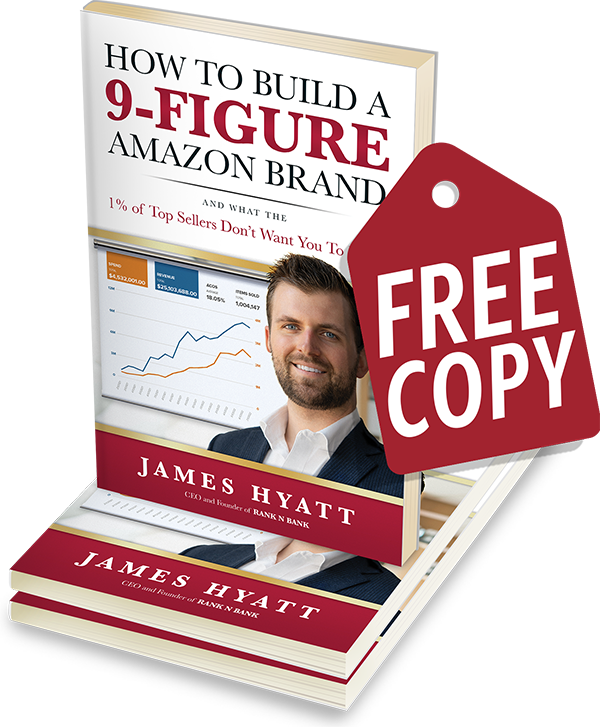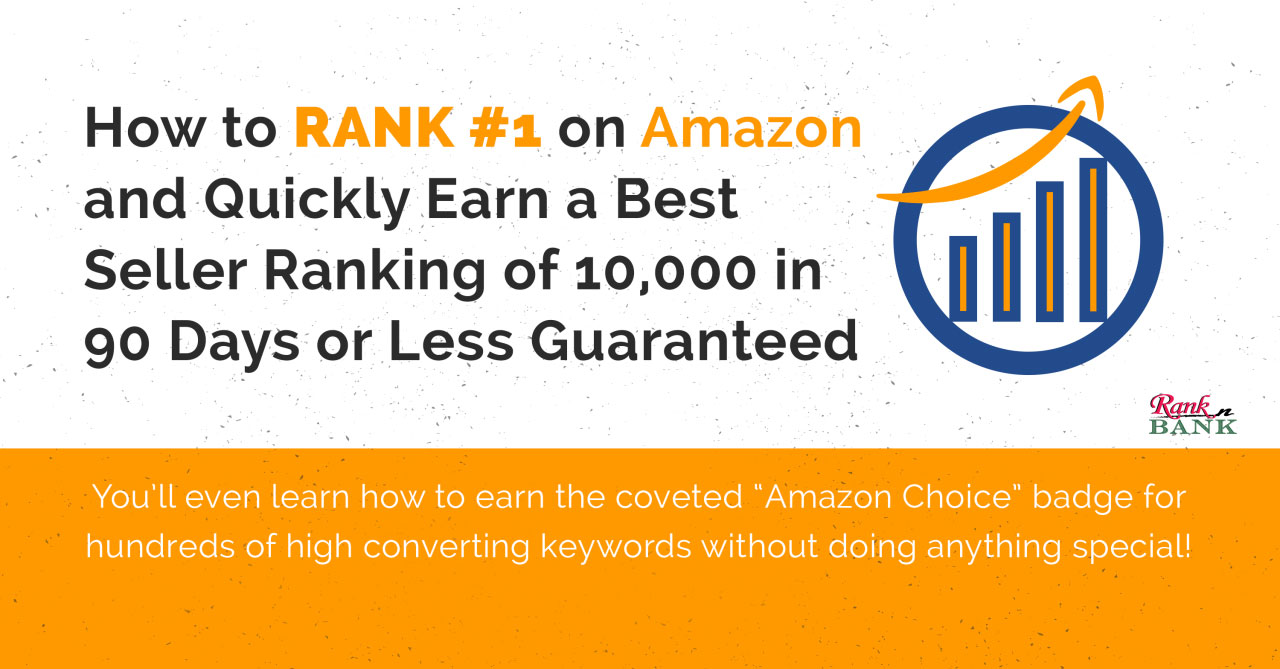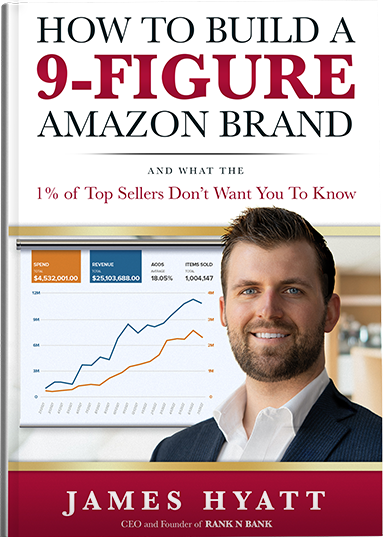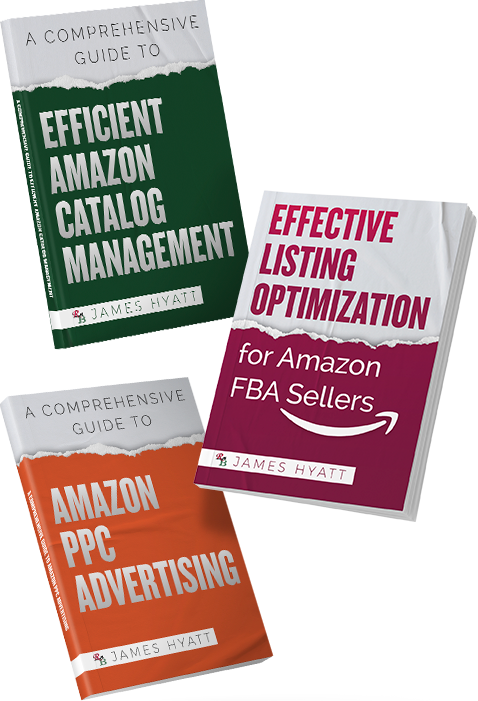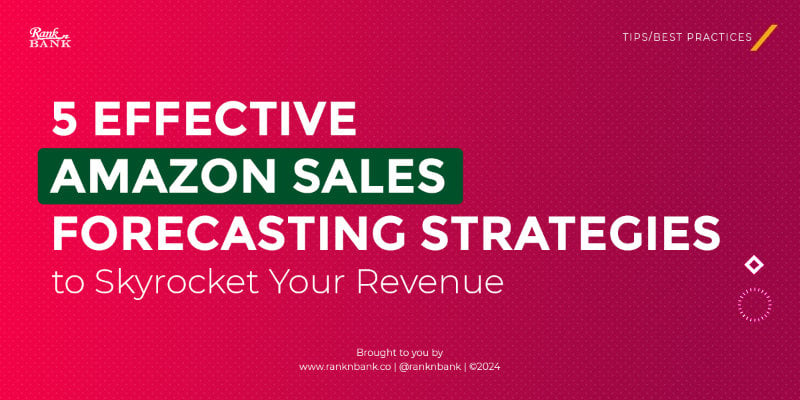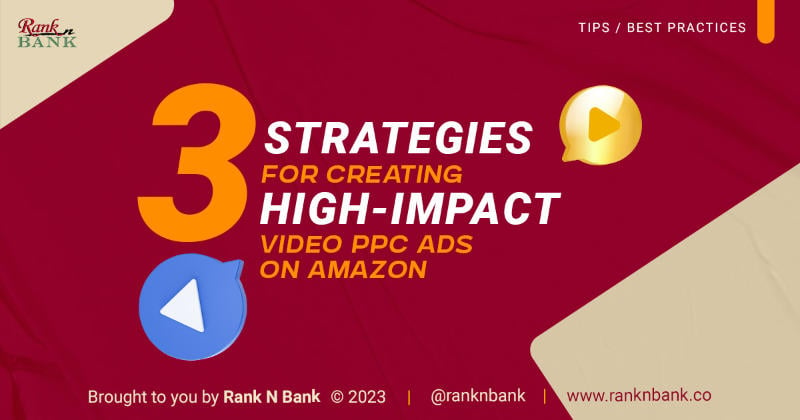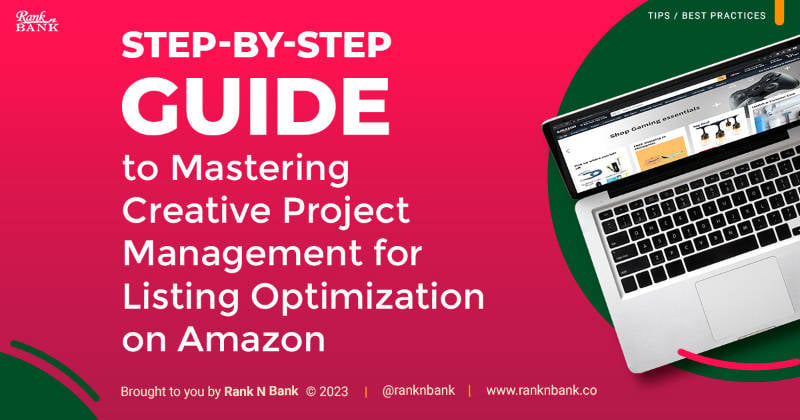You’ll even learn how to earn the coveted “Amazon Choice” badge for hundreds of high converting keywords without doing anything special!
Why Am I Sharing This Information With You?
Over the past 7 years, I have spent just about every waking hour of my non-sleeping time studying and implementing strategies to sell physical products on Amazon. At first, this was for myself and my own private label business, and later on, it was for others.
What I discovered was that there are 3 simple principles anyone can follow to dramatically improve their chances of success with selling on Amazon. And now, I want to share them with you because I’ve personally experienced the pain and frustration of what it’s like when a brand does everything they can to get their products selling successfully on Amazon and still fails. I’ve also seen how these 3 simple principles completely transform those same brands and help them finally realize the success and freedom they’ve only dreamt about with selling on Amazon.
I promise there is no scam here, and after you’ve read through all that I am about to share, you will be able to take action on your own and find this same success as other brands, or ask for help and do the same. Either way, these are proven principles anyone can implement right now in 2021 to succeed with selling on Amazon.
How Ranking on Amazon Really Works
Amazon is a search engine, which means to find things, you must first type in words that describe the thing you want to find. You may not even know what it is you are looking for, but if you can describe it in 2 to 3 words, Amazon will show you the most relevant products they have available to solve your problem or satisfy your interests.
What this means for you as a seller is that you want to do everything and anything you can to make sure your products show up at the top of the first page when someone searches for related terms your product can solve. The reason you want to show up as #1 is because it is proven that the top 3 positions on the search engine results page result in more than 90% of all the sales. But how do you get your products into the top position? We’ll cover that in just a minute.
Ranking is not just based on keywords you write in or add to your product detail page. Sales are also a factor. Think of Amazon’s marketplace as a huge data collection machine: it works hard to track and collect millions of data points from each customer who engages with their system.
Another big factor that goes into ranking #1 is the amount of sales your product generates for a specific keyword. If people type in a keyword and then click on your product and make a purchase, it tells Amazon’s system that your product is highly relevant for that keyword and, therefore, they want to place you closer to the top of the results page so more people will search, find, and buy your product.
The other thing to consider is that Amazon, by nature, is a profit-driven company and they have to make money for their shareholders. As such, it is in their best interest to show products that are most likely to make a sale from customers whose search intent most closely matches your product description.
There are many other factors that go into ranking for keywords, but the main 3 are relevancy, conversion rate, and sales. If you can design your product offering to be a top seller in its category, then you will rank #1 for many relevant keywords and earn the majority of the market share.
What Is a Best Seller Ranking? Why Should I Care?
The Amazon Best Seller Ranking (BSR) is based on your overall sales position compared to all the other products in your category. There are main categories and subcategories in which you can rank.
With the best seller ranking, you are up against all the other competing products in the category, and a ranking of 10,000 means you are literally the 10,000th best-selling product in that category at that point in time. A 10,000 BSR may seem high to you, but when compared to the millions of products that could be for sale in your chosen category, a ranking of 10,000 is actually quite good.
The BSR is an important number to keep track of, because it can tell you when you are doing things right or wrong. It also is a good indicator of the overall success of an ASIN (Amazon Standard Identification Number) and how it is performing compared to the other products in the category.
A Success Formula Hidden in Plain Sight
One activity I learned to do early on in my Amazon career was to study the product detail pages of the top sellers. What’s so cool about Amazon is the data that is available to you as a seller. Amazon provides information such as keyword ranking and BSR so we can get an idea of what products are doing well.
There are also third-party companies that created tools to suggest the amount of money products are earning on a monthly basis. These tools also track product reviews, keyword rankings, and much more! Because of this and mass availability of these tools, the keys to running a successful Amazon business are literally hiding in plain sight as long as you know how to look for it.
Now, I know some of you may be all new to this world, so I’ll make this super easy for you. In my experience outside of inventory and making sure to stay in-stock at all times, success on Amazon boils down to sales, marketing, and, more specifically, 3 unique activities that all work together:
- Listing Optimization
- Advertising Management
- Review Generation
Separating each one of these activities can help you launch and grow your Amazon business, and soon, you’ll be in a rocket ship skyrocketing to success. I have chosen these 3 activities because they are replicable, scalable, and proven.
A little bit more on my backstory now. I started selling on Amazon in 2014, and I gained access to an online training course and self-taught myself by watching the videos and reading the PDFs. I called on manufacturers, sourced a product, shipped it to the U.S., worked with freelancers to design a logo and images, and even wrote the sales copies myself using the Google Keyword Planner tool.
At the time, Amazon PPC was still in the very early stages and underdeveloped but I ran a few PPC campaigns. However, I soon learned that organic search engine optimization was the best way to secure sales. After selling over 500 units in a 6-month timeframe, I was hooked on Amazon.
After college, I went to work with the top Amazon agency in the country, managing the PPC campaigns for the clients they were onboarding. During my time at the agency, I worked with over 60 separate accounts and managed over $100,000,000 in PPC ad spend. I quickly learned all the ins and outs of selling on Amazon and got a quick education in client services and account management. One thing I noticed while managing all of these successful client accounts was that even though we typically applied the exact same PPC strategy to each client’s account, some of the accounts would really take off and do well, while others would struggle.
When I did some more research, I found what the successful accounts did differently. These clients spent the time, energy, and money to optimize their product listing with:
- Beautiful images on white backgrounds
- Engaging lifestyle images
- Beneficial and color-rich infographics
- Well-written and researched titles, bullet points, and descriptions
- A+ content
- Time spent on generating product reviews
These accounts had the highest return on investment for the ads we were running. When I researched even further, I realized these companies had developed a process for this optimization that could be implemented again and again like clockwork. This process would help them rank their products on the top of page one and achieve a really low BSR, meaning they were selling tons of products.
I got really excited to find this pattern in the data and, at that point in time, decided to dedicate myself to becoming a master at selling on Amazon. After about a year and a half of working at the agency, I left and went on to start my own agency called Rank N Bank. I now help clients implement the strategy I am about to share with you.
Okay, back to the 3 main activities:
- Listing Optimization, or LI, is the process of making your product detail page (PDP) as relevant as possible for your target audience. Think of the PDP as a sales letter and, instead of sending it out to your prospects, they come to you.
When they do come to you, make sure to tell them about all the important information they need to know to make a buying decision. We do this through optimizing the title, bullet points, and description, as well as the product, lifestyle, and infographic images.
Consumers have a really short attention span, so we have to reach out and grab them with our content. The difference between ranking on page 1 or page 10 boils down to your conversion rate and what you put on your page.
- Advertising Management means using Amazon’s incredible, scalable way – pay-per-click advertising – to get your products out in front of your audience.
PPC is a pay-to-play platform where you bid against other sellers to show up on the top of the page for keywords or categories. You can effectively choose each keyword phrase you want your product to show up for and pay to be there.
PPC is super powerful because it is a scalable way to consistently drive highly qualified traffic to your product detail page every single day. As you get more people to your page and those people buy your product, you will improve your keyword rankings and your BSR will lower too. The combination of listing optimization and advertising management helps you get as many people as possible to your page and then convert as many of these potential buyers as possible.
- Review Generation is all about getting people to review your products. Amazon knows that consumers make decisions based on the opinions of others, and this is why you will see most top-selling products having hundreds if not thousands of reviews. For your product to become a top seller, you too need to have hundreds or thousands of reviews, but how do you get them? Glad you asked!
There are many ways to generate product reviews. Some of them are white hats and some of them are black hats. At Rank N Bank, we only focus on using white hat tactics, because we don’t want to be in violation of Amazon terms of service or risk account deactivations.
There are three core ways to generate product reviews: The first is Amazon’s internal tool, which is the Vine Program. This tool is found inside your Amazon Seller Central account and can help you receive up to the first 30 product reviews.
From there, you have to implement outside-of Amazon tools. We prefer using a tool called FeedbackFive, which is like an email autoresponder, but it specifically connects to your Amazon Seller account and lets you automate the process of requesting reviews. With each order a customer places with you, you have the opportunity to “Request a Review.”
To do this manually, you would have to click into each order and press the button. Instead of going to all the trouble of manually clicking, FeedbackFive allows you to connect to the “Request a Review” button inside Amazon and it automatically presses the button for you based on triggers. It’s pretty cool because you can set it up so that 7 days after a customer receives their product, the system will send the request for a review at 8 p.m. or whatever day and time you set it up for. With this method, you can expect to receive between a 3-5% review rate. This means that if you make 100 sales, then you will get 3-5 product reviews.
The third option is to work with outside service providers to help you create product insert review flows or product rebate review flows. With most of these, you give your product away for free and then follow up later and ask for the customer’s feedback. These programs can be a little bit trickier, but if done correctly, they can help you generate lots of product reviews too.
Hopefully, now you are starting to get a good idea of how all 3 of these activities work, but here is where the magic happens: When you implement all 3 of these activities at the same time, you create a momentum effect where one pumps up the other, which, in turn, pumps up the other. Amazon loves when your products are well optimized because it means you’ll have a better conversion rate, and when you have a better conversion rate, your PPC ads will perform better. Well-performing PPC ads mean you will spend more money and make more sales, and when you make more sales, you will get more reviews. Many reviews ensure you will rank higher and make more sales, etc. It’s literally a compound effect that is almost unstoppable, and when you figure it out, it is really cool to watch.
Now I want to address the Amazon Choice claim in the sub-head of this article. The Amazon Choice badge appears when your product meets several criteria. It mainly has to do with sales for particular keywords, but there are other factors such as your seller rating, your account health, where your product ships from, and more.
Basically, if Amazon thinks you have the best offer based on the options available for a keyword, then you will earn the Amazon Choice badge for that keyword. When you implement the 3 principles we just reviewed, over time, you will earn hundreds of these Amazon Choice badges, which will really help your overall ranking and sales. There are additional strategies you can implement to target and steal these Amazon Choice badges using PPC and other organic methods, but we will not be covering those in this article.
Why Most People Fail at Selling on Amazon
Most people fail with selling on Amazon because they don’t have a system to follow. They also try to do everything themselves and they give up way too soon. As the years have progressed, I have seen first-hand how selling on Amazon has gotten more complex: before, you used to be able to just put your product up there, do some decent SEO, and start making sales, while now the whole process is so much more involved.
People also think that because it is online, it must be easy and that they can figure it out on their own. Trust me, I have faith in people and I do think they can figure it out, but how long will it take them and how much do they have riding on the line? I see this happen all the time. People spend so much time researching, sourcing, and preparing to sell their first product on Amazon. They spend countless hours negotiating with suppliers and figuring out how to get their products into Amazon fulfillment centers. They even spend tens if not hundreds of thousands of dollars on inventory, and when they are finally ready to get their listings up on Amazon and start running ads, they fall completely flat on their face because sales and marketing on Amazon is no longer anybody’s game.
The sad part about this is that they probably have a really great product, and if they would just work with someone or follow a process, they would probably have been successful. However, most of the time, this is not what happens. It’s because listing optimization, advertising management, and review generation are not things they can physically hold in their hands like they can their product, and as such, they don’t see the value in investing real time and energy in it to get it right. But that is only 1 reason people fail. The other has to do with persistence and simply not giving up.
Like I said earlier, selling on Amazon has and continues to become more complex. Every day we see new issues arising and Amazon putting more red tape in place to keep themselves and their customers happy and safe. When your listing gets yanked because of a pesticide claim or negative customer experience, and you don’t know how to get it back up, this can completely kill all of your momentum and send some sellers off the deep end.
Some sellers can’t even get past the first step with setting up their seller account because they can’t seem to get the documents right for their identity and utility bills. What’s tough is that most of Amazon is run by computer robots that follow a chain of commands. If your paperwork or your listing is not in alignment with their programming, then you get suspended and shut down. Not knowing how to resolve these issues has driven many sellers to straight up quit and never try again.
As an Amazon agency and someone who personally helps sellers through these problems every day. I don’t have special powers or know people on the inside. I just continue to persist and use my experience from the last 7 years to deal with these situations and, most of the time, overcome them and come out better on the other side.
What the Top 1% Best Sellers Don’t Want You to Know
The information I have shared with you today may seem simple enough. But the top 1% sellers don’t want you to know this. They don’t want you to know you can follow a system and start beating them. They don’t want you to develop discipline day in and day out with your listing optimization, advertising management, and review generation because they know that on Amazon, everything is fair game.
This is why up to this point, 51% of all sales on Amazon have come from third-party sellers, and even Amazon themself could not beat us! If you are willing to do what it takes and go beyond mediocrity, then you too can achieve #1 rankings and amazing low BSRs.
Just like in real life, there are so-called “secrets” the top 1% don’t want you to know because they want to keep you where you are. Well, I’ve just shared 3 mega powerhouse ones with you that I found in plain sight, and if you follow them over time like clockwork, you can bang out top-selling products and achieve the freedom and lifestyle you have always dreamed of.
The top 1% of sellers don’t want you to think this is easy. They want you to think this is hard, so you never take the chance. Well, I’m here to say forget that; it’s time for you to shine!
Why You Should Take Action Now So You Don’t Miss Out
Now, if you’ve stuck with me till the end here, I know you’re serious about selling on Amazon, and I know you have what it takes to rank #1 and achieve a BSR of 10,000 in 90 days or less. But you’re probably wondering what to do next, right?
I want you to join me for a FREE 30-Minute Consultation where I am going to visually walk you through the three principles outlined in this article, but in serious detail, I am going to share multiple case studies of real sellers – just like you – who were dazed and confused at first. Then they followed along and implemented the system, and they achieved page 1 rankings and a BSR of 10,000 in 90 days or less. These sellers were not special and did not have millions of dollars to spend without making a return on their investment; they are sellers who took a chance with our agency and came out on top.
Now a disclaimer. The goal of this call is to educate and teach you the exact system we follow in our agency to help our clients. We will also discuss your goals and ambitions with selling on Amazon. At the end of the call, if it feels like a fit, I will invite you to work with us and we will talk about the next steps.
I am not offering coaching or selling any information products. I own and operate an Amazon Advertising Agency, and we sell Listing Optimization, Advertising Management, and Review Generation services. Some of these services are offered à la carte and some are only available with a full-service plan.
Regardless of whether you work with us or not, I promise you will learn cutting-edge information during this FREE 30-Minute Consultation that you can implement right away on your own without my help to see results. For some of you, you’ll get it right away and won’t need our services. Others may just want us to do it for them from the start. I am good either way!
So, as your very next step to rank #1 on Amazon and earn a BSR of 10,000 in 90 days or less, click the link below and sign up for your FREE 30-Minute Consultation. Note, if you’re serious about this opportunity and interested, don’t wait because these calls are not open to everyone. I only accept 25 consultations per month and we already have a waiting list for new clients who are purchasing our services. If you are interested, then hop on this opportunity now because it won’t last long.
I hope this information was helpful, and I had a lot of fun writing it for you. I wish you the best of luck with all of your selling on Amazon adventures and look forward to meeting you soon.
Regards,
James Hyatt
CEO, Rank N Bank
Amazon Advertising Agency


